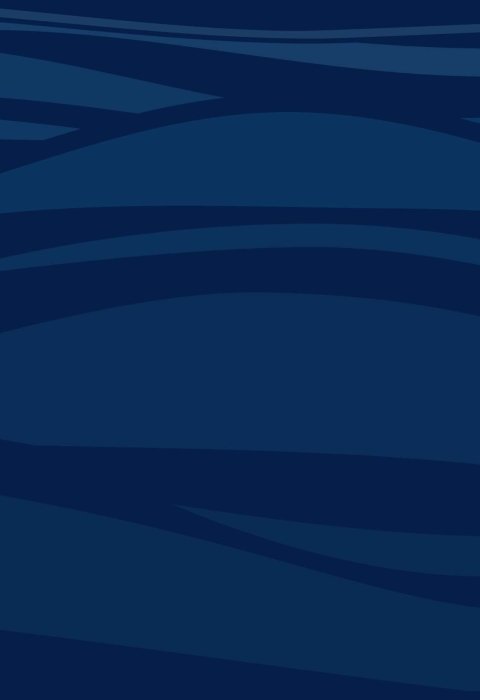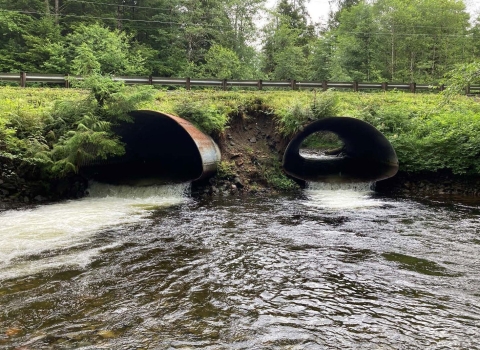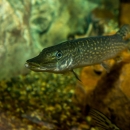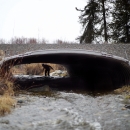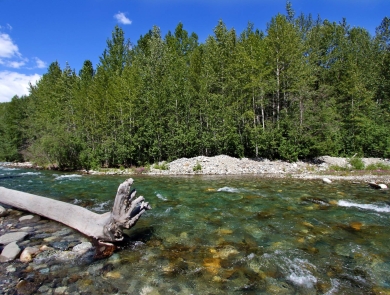This project restores passage for salmonids to 14.3 miles of high-quality habitat by addressing barriers at 11 culverts on Tribal-owned and non-federal lands across Southeast Alaska. Fish passage restoration at these sites are regional priorities, as identified by the Southeast Alaska Watershed Coalition's Watershed Prioritization and local Tribal and community groups. These priorities are based on their ecological benefits and benefits to local communities, including restoration of depressed stocks of culturally-important subsistence salmon. Aquatic organism passage assessment, implementation, and effectiveness monitoring in this project supports a regional strategy to address fish passage fish passage
Fish passage is the ability of fish or other aquatic species to move freely throughout their life to find food, reproduce, and complete their natural migration cycles. Millions of barriers to fish passage across the country are fragmenting habitat and leading to species declines. The U.S. Fish and Wildlife Service's National Fish Passage Program is working to reconnect watersheds to benefit both wildlife and people.
Learn more about fish passage needs at a landscape scale through capacity building and empowerment of Tribal and community groups in Southeast Alaska.
Project Quick Facts:
| Location | Alaska |
| NFPP Project Funding | $4,000,000 |
| Restoration Techniques | Culvert Replacement |
| Partner Project Lead | Southeast Alaska Watershed Coalition |
The National Fish Passage Program: Leaders in Building Bridges and Fostering Connections
The National Fish Passage Program is a national leader connecting watersheds and people. The program has decades of experience implementing infrastructure projects with partners. Fish passage project proposals can be initiated by any individual, organization, government, or agency. However, proposals must be submitted and completed in cooperation with a Fish and Wildlife Conservation Office. (Please note that fish passage projects being used for federal or state compensatory mitigation or required by existing federal or state regulatory programs are not eligible for funding through the National Fish Passage Program.)
CONTACT A FISH PASSAGE COORDINATOR IN YOUR AREA TO GET STARTED.
200 Million Dollar Investment in Rivers, Wildlife, and Communities
Clean free-flowing waterways are vital to wildlife, people, and ecosystems. But across the country, millions of barriers fragment rivers, block fish migration, and put communities at higher risk to flooding. The Bipartisan Infrastructure Law Bipartisan Infrastructure Law
The Bipartisan Infrastructure Law (BIL) is a once-in-a-generation investment in the nation’s infrastructure and economic competitiveness. We were directly appropriated $455 million over five years in BIL funds for programs related to the President’s America the Beautiful initiative.
Learn more about Bipartisan Infrastructure Law , signed in November 2021, included $200 million for restoring fish and wildlife passage by removing in-stream barriers and providing technical assistance under the National Fish Passage Program.
